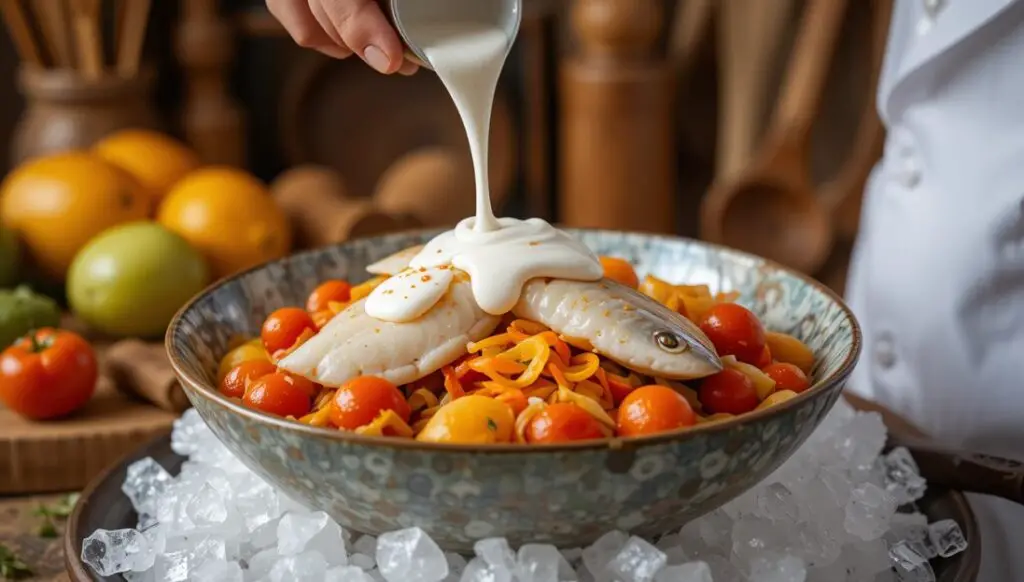Shutome fish, commonly known as broadbill swordfish, is a prized catch in the culinary world. Its firm texture, mild yet slightly sweet flavor, and high oil content make it an excellent choice for grilling, searing, and raw preparations. Found in warm waters, particularly around Hawaii, Shutome fish is a sustainable and delicious seafood option that brings a unique taste to your dining table.
This fish is often used in traditional Pacific Island dishes, where its rich flavor pairs well with citrus, coconut, and fresh vegetables. Whether served raw in a ceviche-style dish or cooked to perfection on a grill, Shutome fish is a versatile ingredient that can elevate any meal. Its high protein and omega-3 fatty acid content also make it a nutritious choice for seafood lovers.
Shutome vs. Swordfish: Understanding the Differences
| Feature | Shutome Fish | Swordfish |
|---|---|---|
| Texture | Firm yet slightly more tender | Dense and meaty |
| Flavor | Mild, slightly sweet | Mild with a richer, meatier taste |
| Cooking Methods | Ideal for raw dishes and grilling | Best for grilling and roasting |
| Availability | Common in Hawaiian waters | Found in oceans worldwide |
| Sustainability | More sustainable choice | Can be overfished in some areas |
Poisson Cru with a Twist: A Shutome Fish Recipe Inspired by Tahitian Flavors
Poisson Cru, a classic Tahitian dish, is similar to ceviche but features coconut milk for a creamy texture and tropical taste. This unique version uses Shutome fish, adding an elegant twist to the traditional recipe.
Ingredients:
- 1 1/4 lb. wild Shutome fish fillet, thinly sliced into 1/4-inch squares
- 1/2 cup pomelo juice (or substitute with pink grapefruit juice)
- 1/4 cup fresh lime juice
- 1/4 cup Meyer lemon juice
- 1 small sweet onion, thinly sliced
- 2 teaspoons coriander seeds, toasted and crushed
- 1 teaspoon sriracha (chili-garlic sauce)
- 1 cup cherry tomatoes, seeded and thinly sliced
- 1 cup baby carrot ribbons
- 1 teaspoon salt
- 1 teaspoon sugar (adjust if using grapefruit juice)
- 3/4 cup pomelo flesh, pith and membrane removed
- 3/4 cup coconut cream (shake well before using)

Instructions:
- Prepare the Fish: Place the thinly sliced Shutome fish in a large non-reactive bowl. Ensure the pieces are evenly cut to allow for uniform marination.
- Marinate the Fish: Add the pomelo juice, lime juice, and lemon juice to the bowl, making sure the Shutome fish is fully submerged. Cover the bowl with plastic wrap and refrigerate for at least six hours or overnight for a fully opaque texture.
- Drain and Season: Once the fish is “cooked” by the citrus juices, carefully drain most of the liquid, leaving about 1/4 cup. Add the toasted coriander seeds and sriracha, then mix gently to distribute flavors.
- Add Vegetables: Fold in the slivered cherry tomatoes, carrot ribbons, salt, sugar, and pomelo flesh. If using grapefruit, adjust the sugar to balance acidity.
- Incorporate Coconut Cream: Pour the coconut cream over the mixture and gently stir to combine.
- Serve Chilled: Transfer the Poisson Cru to a serving bowl and place it over a larger bowl filled with ice to keep it chilled. Garnish with fresh herbs or edible flowers for a decorative touch.
- Enjoy: Serve immediately with a side of taro chips or toasted bread for an authentic experience.
This Shutome fish Poisson Cru variation offers a refreshing and creamy balance of flavors, perfect for warm weather dining.
Health Benefits of Shutome Fish: A Nutrient-Rich Seafood Choice
Shutome fish is not just delicious; it is also packed with essential nutrients that benefit overall health. Including this fish in your diet can provide numerous advantages, making it a fantastic protein source for health-conscious individuals.
Rich in Omega-3 Fatty Acids
Omega-3 fatty acids are crucial for brain function, heart health, and reducing inflammation. Shutome fish is an excellent source of these healthy fats, supporting cardiovascular wellness and reducing the risk of chronic diseases.
High-Quality Protein Source
Shutome fish is rich in lean protein, making it a great option for muscle growth and repair. A single serving provides all essential amino acids needed for overall body function.
Supports Immune Health
The combination of essential vitamins and minerals in Shutome fish, including vitamin D, B12, and selenium, helps boost immune function, maintain strong bones, and support cognitive health.
Low in Mercury (Compared to Other Large Fish)
Unlike many top-of-the-food-chain fish, Shutome fish has relatively lower mercury levels, making it a safer choice for regular consumption. Choosing sustainably caught Shutome fish further enhances its health benefits while promoting responsible fishing practices.
Cooking Tips for Shutome Fish: Perfecting Every Dish
Shutome fish’s firm texture and mild flavor make it ideal for various cooking techniques. Here are some expert tips to ensure the best results:
Grilling:
- Preheat the grill to medium-high heat.
- Brush the Shutome fish fillet with olive oil and season with salt and pepper.
- Grill for 3–4 minutes per side, ensuring a golden crust without overcooking.
Pan-Searing:
- Use a cast-iron skillet for a perfect sear.
- Heat a small amount of oil over medium-high heat.
- Cook the fillet for 2–3 minutes per side until golden brown.
Baking:
- Preheat the oven to 375°F (190°C).
- Place the fish on a parchment-lined baking sheet.
- Bake for 10–12 minutes until opaque and flaky.
Raw Preparations (Sashimi, Poke, and Ceviche):
- Use only the freshest, sushi-grade Shutome fish.
- Slice thinly against the grain for a delicate texture.
- Marinate with citrus juices and seasonings for ceviche or serve with soy sauce and wasabi for sashimi.

By following these cooking tips, you can fully appreciate the exquisite taste and texture of Shutome fish in various dishes.
Conclusion
Shutome fish is a true seafood delicacy that offers incredible flavor, nutritional benefits, and versatility in cooking. Whether enjoyed raw in Poisson Cru, grilled, or pan-seared, this fish is a standout ingredient that can elevate any meal. By choosing sustainably sourced Shutome fish, you can enjoy its delicious taste while supporting responsible fishing practices.
For seafood lovers seeking a unique and nutritious fish, Shutome fish is a must-try. With its firm yet tender texture, rich flavor, and endless culinary possibilities, it is a perfect addition to any gourmet meal. Try the Poisson Cru recipe above or experiment with your own Shutome fish dishes to experience the best of this exceptional seafood.



